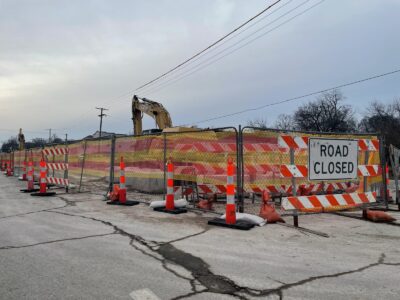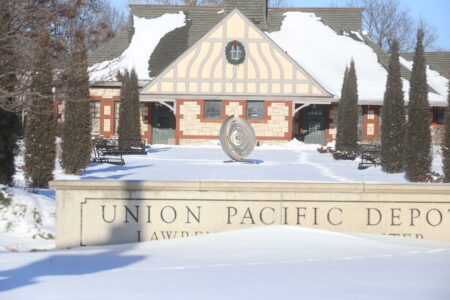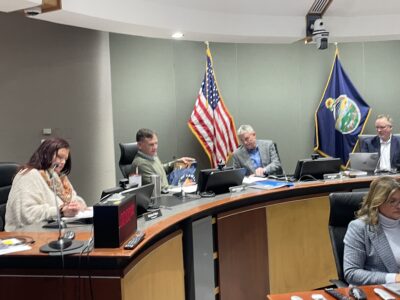New ‘very high density’ zoning takes a step forward on property in the Oread neighborhood
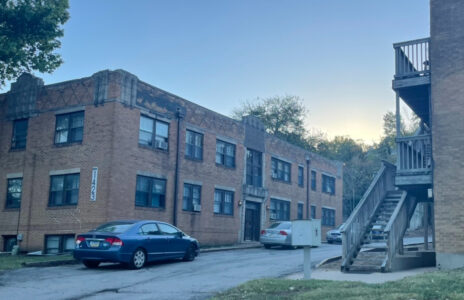
photo by: Sylas May/Journal-World
The building at 1423 Ohio St. This is one of the properties that is proposed for rezoning from R-4 to R-5.
A new type of zoning for “very high density” housing now is a step closer to being approved in Lawrence for the first time ever.
On Wednesday night, the Lawrence-Douglas County Planning Commission voted unanimously to recommend that the City Commission rezone four properties in the Oread neighborhood from their current zoning category of R-4, or high density residential, to R-5, or very high density residential. The properties are at 1430 and 1432 Louisiana St. and 1423 and 1433 Ohio St., and planning staffers said a group of developers sought the rezoning “to facilitate development of higher density housing on the site.”
R-5 zoning is a new type of zoning established by the city’s 2025 Land Development Code, and this would be the first district in the city with that zoning. Planning staff said in a report to the commission that it’s intended to be used for “predominantly residential development near retail, employment, transit, and other concentrated uses,” and that it allows for taller buildings and more densely concentrated housing.
The four properties sit on a 1.34-acre piece of land adjacent to campus. They are surrounded by The Wagon Wheel, popularly known as “The Wheel,” to the north; KU’s Pearson and Stephenson scholarship halls to the west; and greek houses to the south and east. The properties have five buildings on them now: four apartment buildings and a “detached dwelling.” Because all of these are more than 50 years old, any project that would demolish them would have to be approved by the Historic Resources Commission first.
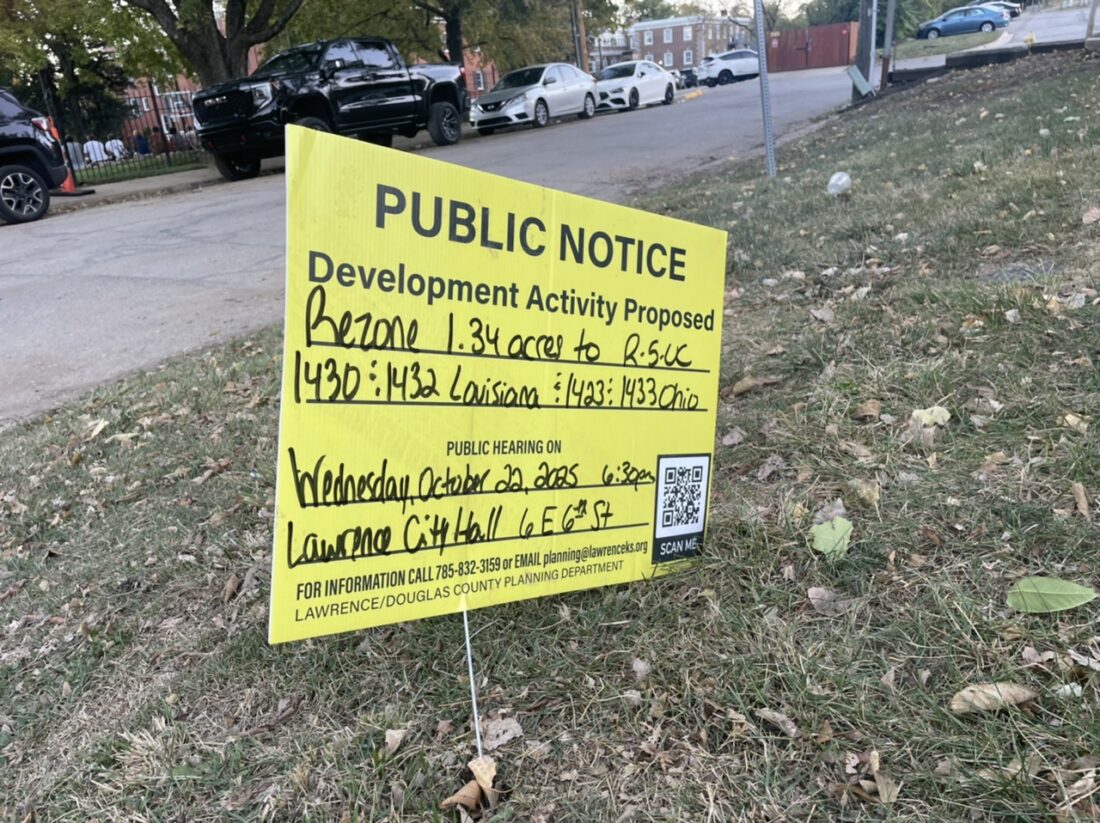
photo by: Sylas May/Journal-World
A sign outside properties at 1430 and 1432 Louisiana St. and 1423 and 1433 Ohio St. gives notice of the proposed rezoning from R-4 to R-5.
Planning staff had received few details prior to Wednesday’s meeting about what a development on the site might look like. The group — which includes Compton Holdings LC, a company owned by local developer Doug Compton — did not provide a conceptual plan, and no such plan for the proposed development was shared on Wednesday.
Whatever the developers might be thinking of building, the R-5 zoning would allow it to be very dense. Under R-4 zoning, which is already intended for high-density residential structures such as multi-story apartment buildings, a property can have a minimum of 16 dwelling units per acre and a maximum of 32. But R-5 zoning specifies a minimum of 33 dwelling units per acre and does not put a cap on how many dwelling units there can be.
Lance Adams, of Adams Architects, spoke for the developers and said that there were 50 housing units in the properties, but two were condemned. He said that the area was already over the 32 units per acre that would be the normal cap for R4.
“We are just trying to bring the zoning up to be what it already is,” Adams said.
A change in zoning would not require that the existing buildings be torn down, according to the report from planning staff. The report said the current buildings and uses could be maintained in the R-5 district as they currently exist.
Planning Commission Chair Chelsi Hayden, before the vote, said the idea of redeveloping this area in the Oread neighborhood was “exciting.”
“We need more housing; we’re looking for more density,” she said.
A public commenter, Jeffrey Heppler, voiced enthusiasm for the rezoning, as well.
“Infill the hell out of this space!” he said. “… This is what the community is seeking. More housing, more affordable housing.”
The rezoning request will now go to the City Commission at a future meeting.



